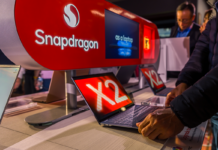
Along with its new trio of Galaxy S20 smartphones, Samsung also officially unveiled its new Galaxy Z Flip foldable smartphone at its Unpacked 2020 event.
There were plenty of rumours and leaks about the Galaxy Z Flip prior to the announcement, including a commercial during the Oscars, but this was the first time media got the chance to flip it open. The device is a different take on a foldable phone. It’s not the same as the Galaxy Fold that came to market in December 2019. It’s more like the flip phones of days gone by.
I got some hands-on time with the new device and came away with some first impressions on what may be an interesting option for 2020.
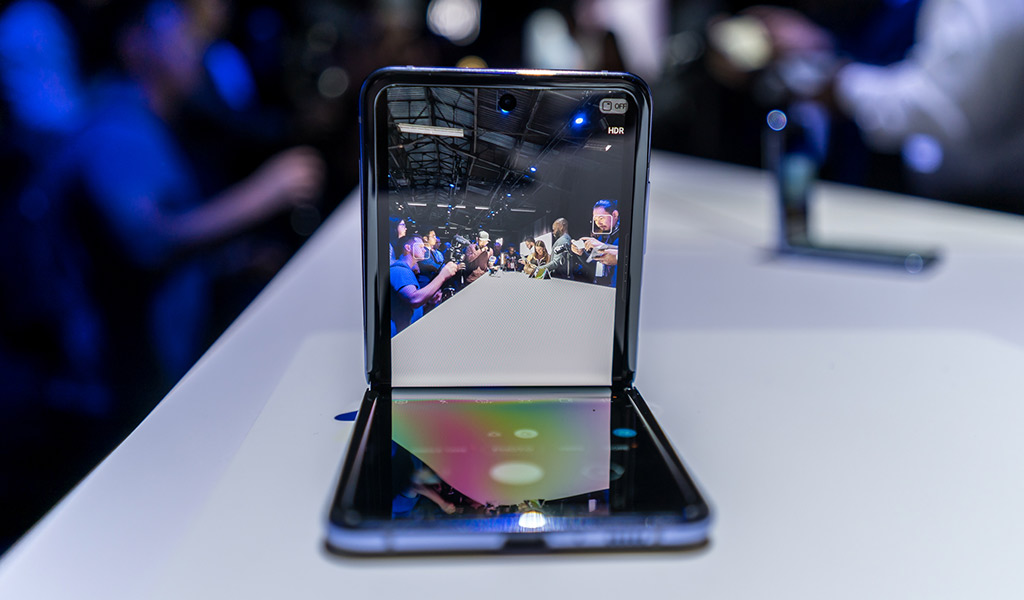
A new-ish design
The most obvious takeaway from the Galaxy Z Flip is its form factor and design. Motorola has already attempted something like it with its new-look Razr, and this phone feels similar to that one. The big difference off the bat is the hinge because it’s strong enough to prop up the upper half. Lay the phone down on its bottom half and it can split the screen in two for practical purposes.
That includes watching a YouTube video on the top and seeing comments at the bottom. Or you can set up for a photo and snap it with the shutter at the bottom, which is great for low-light and long exposure images, including the Hyperlapse mode. It remains to be seen how third-party apps will utilize the screen this way.
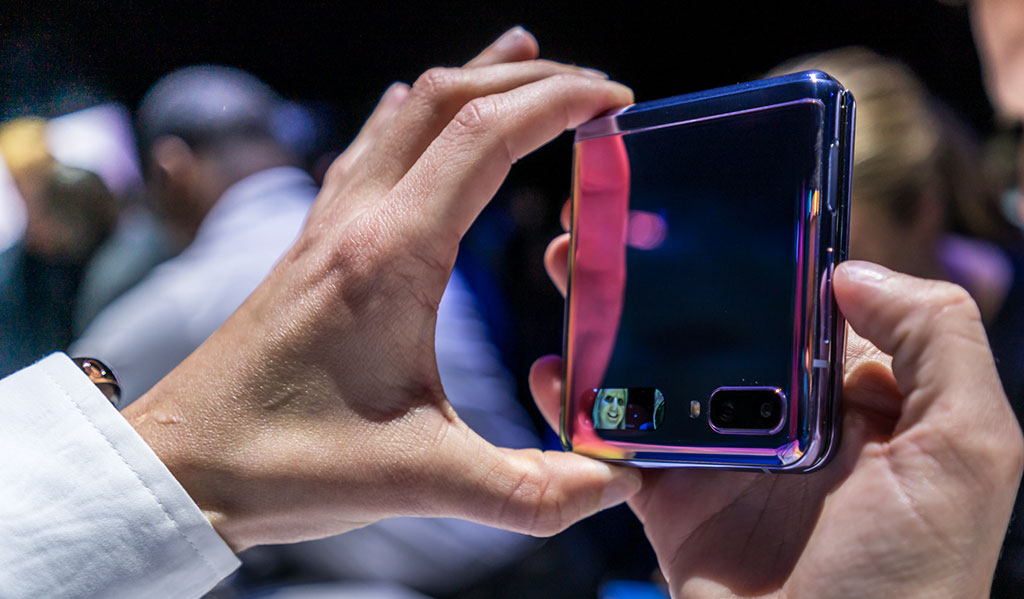
Selfies can work the other way around, angling the top to view yourself and take a shot without holding the phone. When closed, the Flip’s small notification display in the corner can show your face to help you frame your shot before shooting.
This is perhaps the most interesting tidbit about the phone—the fact it isn’t an either or situation. You can still use it when not fully folded or opened. Equally fascinating is the fact it uses real glass. I had anticipated Samsung would use the same kind of polymer for the screen the Galaxy Fold had. Instead, the Galaxy Z Flip uses actual glass, though it’s a mystery as to what the deal is with it.
When folded out, the screen is a sizeable 6.7-inches, yet the device feels pretty thin in spite of that. Part of the reason is because Samsung was careful not to cram too much into it.
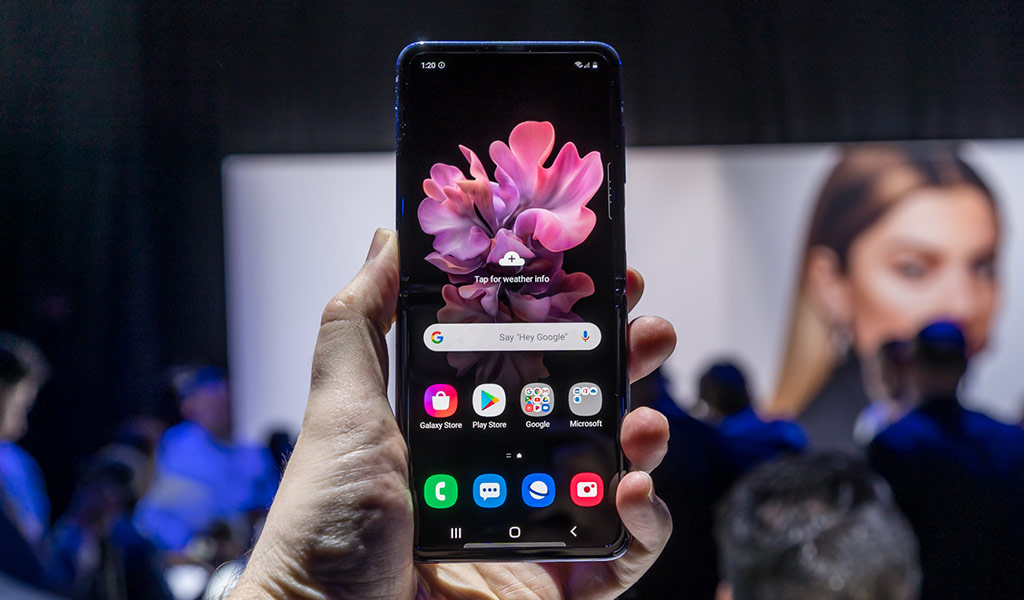
Making compromises
The specs are modest, including the cameras. There is a 10-megapixel front-facing camera for the selfies I mentioned earlier, plus two lenses in the rear. You get 12-megapixel standard wide and ultra-wide to work with, and they are basically the same cameras Samsung used in the Galaxy S10 last year. Indeed, many of the specs inside are from last year, so this is a unique design, but not with unique components under the hood.
You can shoot 4K video, and some of the same camera software features introduced in the Galaxy S20 phones have migrated over here too. I spotted Single Take and Pro Video mode, and there may be more once I test the phone out.
The phone does run on Android 10, except I didn’t really have time to gauge how the operating system handles this design. As I noted earlier, third-party apps will have to decide how they make use of it. In the meantime, it will be up to Samsung to bridge the gap. The interface felt responsive, and since this isn’t a radically different screen aspect ratio, everything looks pretty normal when the phone is folded open.
Being a Samsung device, it will have the same functionality with other Samsung products, so nothing changes there. Battery life is a mystery at this point, though the company says it should hold up well on a daily basis. It does support wireless charging as well.
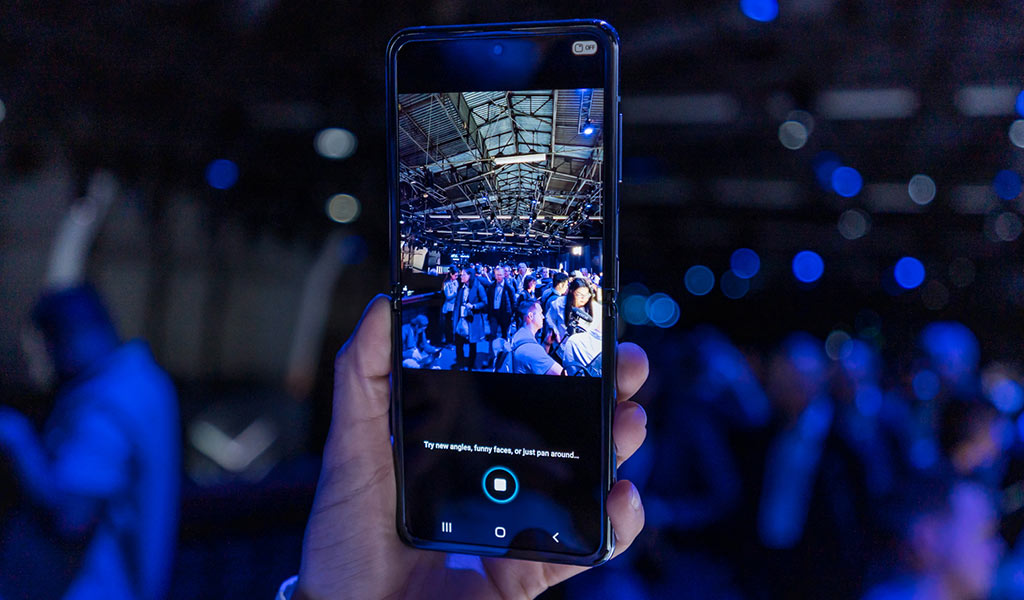
Coming soon
Durability will be a question throughout the Galaxy Z Flip’s lifespan. Samsung claims the hinge can handle up to 200,000 flips, which is as high as the Galaxy Fold. Still, to me, this is not what I would consider a durable phone. It’s got glass on the back, and when folded, it could be slippery. No doubt it’s easier to pocket, and women might associate the clamshell look with a makeup case (I thought of that when I first saw it).
Look for a full review of the Galaxy Z Flip coming to the blog soon. Pre-orders are underway leading up to the phone’s availability starting Feb. 21. The phone will come in mirror purple and mirror black.



